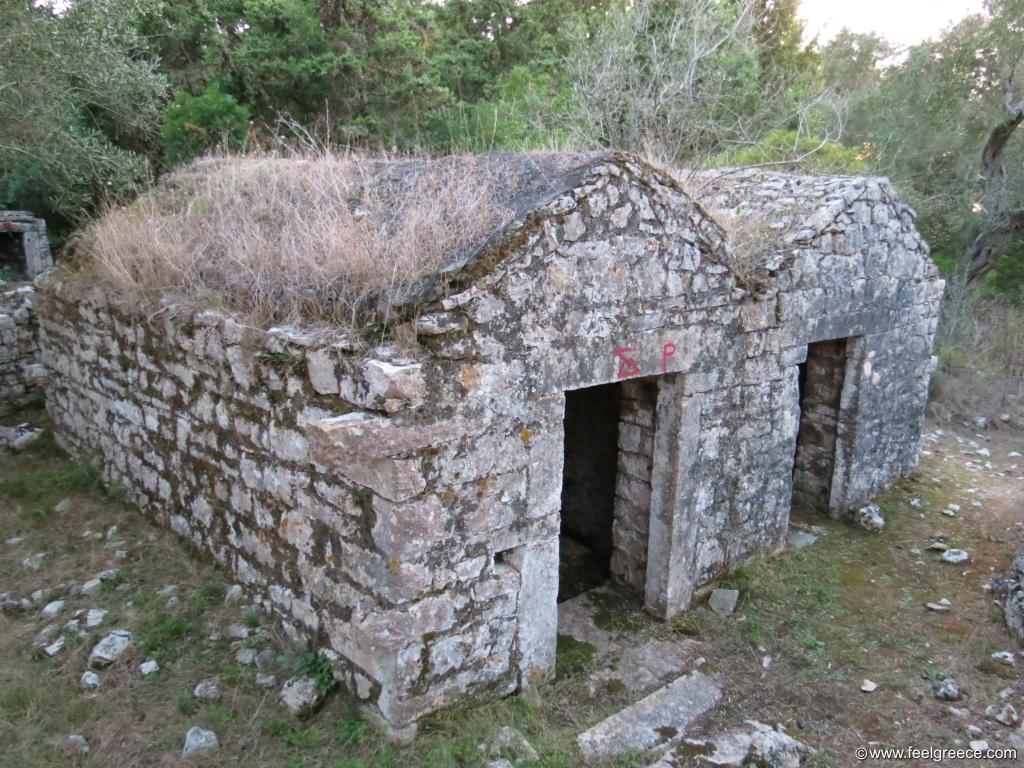Stone-Carved Cisterns of Sarakino

Apart from being a modern-day travel destination with tasty restaurants, villas and lovely beaches, the Greek island of Paxos offers visitors some archaeological delights. One of those is a small complex of cisterns. For anyone with an interest in Greek history, the stone carved cisterns of Sarakinos are worth a visit, especially since they are close to other attractions.
Before zooming in on this historical gem of tiny Paxos, let’s tackle the question of what cisterns exactly are. Cisterns are reservoirs that were used to hold fresh water. This water collection system then distributed the water to various buildings, such as monasteries, palaces, churches, and public baths. The water was usually brought into the cisterns by aqueducts in the wetter months of the year, in order to store this water for usage in the drier summer months.
Cisterns usually consisted of rectangular chambers with pillars that supported the roof. The roof blocks protected the collected water against twigs, bird poo, leaves, and of course people falling in so that a relatively clean supply of water was guaranteed.
Cisterns were built by the Romans, who were present on the Ionian islands from about 228 B.C. The cisterns of Paxos are relatively small, but nevertheless an interesting artefact. Little information can be found to this attraction online, so it’s worth going with an expert like an archaeologist or a historian. Such a guide can point out little details that the untrained eye might miss, and their stories really bring history to life. As you can read below, one visitor found ancient Roman and Greek pottery fragment.
The stone-carved cisterns of Sarakinos are located between the villages of Mpоiкаtiκа (Boikatika) and Μαγαζιά (Magazia). Almost opposite the Shell petrol station, take the turn-off towards the west coast. A sign points you towards the church of Agios Apostoli and sunset view restaurant Erimitis. On this new road, a brown sign will point you towards the rock-carved cisterns. After parking your car, it takes a mere 4 minutes to walk to this piece of ancient history. Follow the rocky trail through the thick undergrowth and past collapsed walls until you reach the cisterns, which can be recognised by the stone huts set on top of them.
Before going to this historical construction, you may want to read other visitors’ reviews online. One of the visitors who left a Google review for these cisterns was Richard Phillips. In May 2022, he commented: “I traveled here with an archaeologist, and it was interesting to see and touch such an old water collection system. We found broken Roman and Greek pottery fragments. It was worth a visit, but I found little info about these cisterns, so manage your expectations.”
Another review from May 2022 mentioned that the ruins were “cool to see, and their function was to prefer water.” But, more intriguing perhaps, was this person’s observation that this was a “lovely place to discover wild herbs”. And indeed, on Paxos you can find herbs like rocket, thyme, laurel, rosemary, and oregano. What better place to look for these than an off-the-beaten track destination like the cisterns of Sarakinos?
In July 2022, French visitor Josselin Millecamps got to see this site with his own eyes. “If you are interested in history, this is a must-see. Not all old cisterns have the same state of conservation,” he remarks, evidence of his familiarity with this type of ancient construction. “I recommend this site!”
If it’s history that piques your interest, Paxos has more to offer than the cisterns of Sarakinos. The island, with a population of only 2,500 residents, is home to a striking amount of churches – 64 in total. That is one for every 70 residents! Not all of these are in working order, though, and some are in complete shambles. But if it’s ancient that you’re looking for, Paxos has two church ruins that will send your heart beating faster: Agia Marina and Agios Stefanos, both in Ozias. Much like the cisterns, these ruins take some cross-country hiking to get to. At almost 1,500 years old, they take you back a long ways, to the fall of the Roman Empire.
Another great example of ancient architecture on Paxos is the Castle of Agios Nikolaos on the island’s capital, Gaios. Building permission for this castle was granted in the year 1423, which makes this construction almost 600 years old! What remains of the castle today are some walls, a water-tank, a watchtower, and some cannons.
Are you into culture? Then be sure to visit one of the many events of the Paxos Music Festival, that takes in the summer months. Classical music, art exhibitions, and literary events dominate the island’s calendar, drawing many visitors from all over Europe and beyond.
